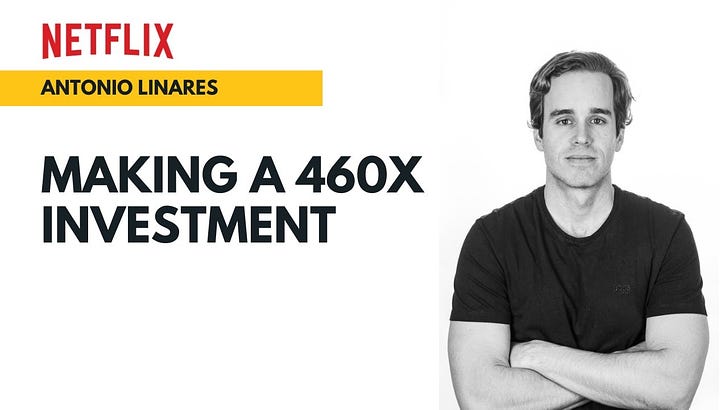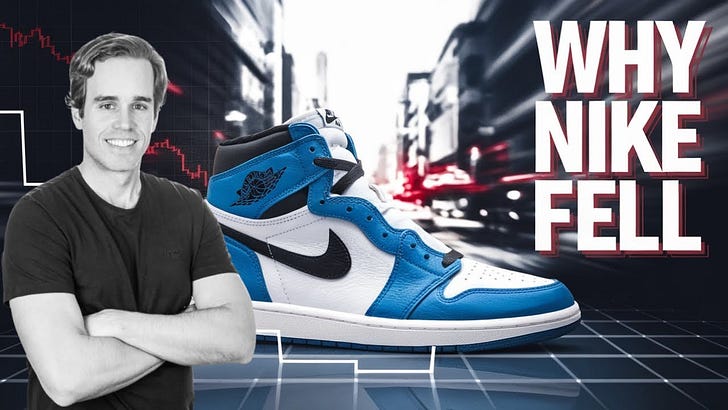This an update of my original Costco deep dive.
The Costco Algorithm remains the world’s prime blueprint for exponential value creation processes.
Costco’s Q2 FY2025 earnings report is a masterclass in terms of learning how to spot this algorithm, which is arguably the most lucrative skill in the modern world.
Approximately one third of Costco’s sales in the US are imported from other countries and around half come from China, Mexico and Canada. The tariff war therefore presents Costco with remarkable uncertainty in terms of their costs. Regardless, Costco decided in Q2 FY2025 to pay employees more and to drop prices for customers. This demonstrates Costco’s relentless commitment to give stakeholders better deals over time.
My original Costco deep dive is focused on what I term the Costco Algorithm, which I believe is a blueprint for long lasting organisational success. As a result of this algorithm, Costco’s free cash flow per share is up over 141-fold since 1996 and long term shareholders have seen the value of their shares rise over 100-fold. Costco’s organisational culture is geared towards giving customers and other stakeholders, like employees and providers, better deals over time.
Costco then reinvests the money it makes into giving folks even better deals by getting more efficient. As such, every year that goes by it gets exponentially harder to replicate Costco’s business. In this manner, Costco has been able to grow its top line exponentially and defensibly, rewarding shareholders beyond what’s considered reasonable. Q2 2025 is testament to two things: there is no limit to the long term potential of Costco’s algorithm and knowing how to spot it in the wild is a tremendously lucrative skill.
It’s impressive that decades after its foundation and after increasing the value of its shares by orders of magnitude, over 85% of Costco’s warehouses are located in the US. Further, the obsession with delivering more value to customers per dollar spent on their behalf is a universal language: customers worldwide respond equally to such a value proposal. Conversely, just over 8%, 4% and 1.8% of Costco’s warehouses are located in Asia, Europe and Oceania respectively. In other words, Costco has decades ahead of scaling worldwide.
Additionally, management reiterates numerous times in the earnings calls over the past few years that Costco has considerably upside via infilling: simply opening more warehouses in the US. Costco gains popularity during economics recessions and is largely immune to the unpredictable evolution of technology. It’s laser focused on delivering a finite number of SKUs to customers at a lower real price over time. And this formula implies that Costco likely has additional 100-fold upside over the decades to come.
Costco’s history proves that culture is the greatest predictor of financial performance. The future was unknown to Costco and its stakeholders at any point along the journey that you see below. However, free cash flow per share has risen exponentially driven by Costco’s obsession with giving stakeholders better deals in a way that’s increasingly harder to replicate. Thus, so forth as this obsession remains at the center of Costco’s corporate culture, continued outperformance is more likely than not. And most investors underestimate the power of buying and holding world class corporate cultures for decades.
This is broadly true of any other company. The financial industry has a tendency to magnify the implications of quarterly financial metrics and ignore the forces that truly drive long term shareholder wealth. Further, if you study the greatest success stories in the stock market of the last decade, most of them are genetically similar to Costco. They typically run an instance of the Costco Algorithm but applied to network effects.
Costco is in fact a network that connects employees, providers and customers. It connects these three stakeholders via physical means that revolve around their warehouses. In turn, great success stories like Netflix, Amazon, Spotify and Uber are on a first principles basis networks that are similarly obsessed with delivering more value to customers per dollar spent. As time goes by, it gets exponentially harder to replicate these operations and by the nature of network effects, they have deceived investors for many years.
Indeed, scale precedes profits in the network-defined economy in the list of strategic priorities. Once you are much bigger than you next competitor, then you can focus on monetising your network and driving financial performance. At present, the world is waking up to the reality that these instances of the Costco Algorithm are extremely powerful businesses. And much like Costco, they are only getting started and have considerably upside ahead, so long as their respective corporate cultures remain focused on giving customers more value per dollar spent.
The question is, therefore, how to spot instances of the Costco Algorithm before the market does? And once having succeeded in the later mission, how to ensure that a company continues to execute the algorithm correctly and thus maximise the odds of delivering market-beating shareholder returns over time? This is the primary problem that my Tech Stock Goldmine course solves - it teaches students to spot world-class companies before the market does and to monitor the evolution of the thesis in questions successfully over time.
However, Costco’s Q2 FY2025 earnings report is a great example of the Costco Algorithm in action. As explained earlier, Costco is highly vulnerable to potential inflationary pressures that may stem from the tariff war. Regardless, the company has decided to invest in employees and consumers by paying the former more and dropping prices for the latter. True instances of the Costco Algorithm stick their neck out during times in which others never would.
Costco’s relentless focus on delivering lower prices to customer’s shines through in CEO Ron Vachris’ remarks during the call:
We continue to look for ways to increase the value for our members, both with national brand items and our private label offerings. Our goal is always to be the first to lower prices, where we see opportunities to do so and the last to increase prices in the face of rising costs.
A few examples of lower prices this quarter include KS Refined Olive Oil single three litre from $29.99 to $27.99, KS Organic Peanut Butter from $11.49 to $9.99 and KS Tortilla Strips from $5.69 to $4.99.
When asked during the Q&A section of the Q2 FY2025 earnings call what the impact of these measures would be and how Costco plans to deal with potential inflationary headwinds, Costco CEO Ron Vachris calmly leaned on Costco’s ability to get more efficient over time and buffer consumers from adverse macroeconomic developments:
As far as the tariffs go on the grocery items, our buyers deal with those like they would any other cost increase and there are sometimes the margins are much tighter in those categories, but they're prepared to work closely with the suppliers and see how efficient we can bring goods to market, is there anything we can mitigate in those categories.
So the tariffs are very fluid right now.
So it's hard to really give any predictions on what we can do, but we are prepared, our people are very well equipped to lower prices and defer any cost increase that come our way. So we're going to do all we can should that happen.
In the abstract, a CEO telling analysts that the company will cut through additional inflation by getting more efficient is not a sufficient signal. However, Costco’s track record indicates that the company has the organisational capability to do this. Hence, Q2 FY2025 stands out for Costco’s willingness to take on financial pain in order to continue compounding goodwill with stakeholders, as they did during the Great Financial Crisis. The new employee deal is expected to create an SG&A headwind of 13 basis points.
My recent Nike deep dive elucidates how the inverse is a great predictor of financial underperformance. The previous Nike CEO chose to prioritise short term financial performance (aided by a predominance of short term incentives), as a pose to absorbing short term financial pain in order to truly delight customers. Nike is now in dire straits (although not quite out of the map, as the graph below elegantly summarises), with emerging brands having captured a meaningful part of the zeitgeist.
Generally, when a company has a track record of delighting consumers against all odds, regardless of a tangible financial cost in the short term and increasing free cash flow per share later on as a result, it tends to be a potential instance of the Costco Algorithm. As explained previously, when dealing applied to modern network-effects said algorithm tends to manifest in the form of a company that’s laser focused on growing active subscribers for decades before focusing on profitability. A great example is Spotify: the graph below is worth a thousand words.
On top of the fixation on cost reductions, Costco’s focus on enhancing value for the consumer also shines through in the Q2 FY2025 earnings call. Vachris shared during the last earnings call how Costco had managed to increase the value of its diapers by 11%:
Our merchants also continue to drive innovation with Kirkland Signature. Most notably this quarter, we worked with a new supplier to rework our Kirkland Signature Diapers. Improvements versus the prior offering include a longer and thicker absorbent layer, softer outer cover and 2 times more stretch in the waistband.
As well as improving the quality of this item, we were able to increase the value by 11%.
Other new KS offerings this quarter include KS French Fries, KS Vodka and Soda and new KS Lager. Kirkland Signature continues to grow at a faster pace than our business as a whole. Within ancillary businesses, Pharmacy and Food Court departments led the way.
Much like the remarks about Costco being confident in its ability to fight whatever inflation comes along via additional efficiency, the above remarks are an insufficient signal on their own. However, as I explain in my original Costco deep dive, Kirkland (Costco’s proprietary brand) accounts for approximately 30% of sales. This means that whatever it is Costco does to enhance value per dollar spent, it works and customers like it.
Generally, a company’s focus on enhancing value per dollar spent is perceived via the combination of qualitative remarks from management and real traction in the marketplace that eventually competitors cannot keep up with. We have a saying in Spanish which goes along the lines of “if it sounds like frog, jumps like a frog and looks like a frog, it’s probably a frog.” Indeed, when a management team seems obsessed with giving customers more for less and the traction is evident, it’s usually an instance of the Costco Algorithm.
Lastly, if you haven’t I recommend you check out my Netflix and Nike deep dives. There’s a tremendous amount of lessons to be learned from these two cases. The market left Netflix for dead in 2022 and has now declared it a “recession hedge”. In turn, Nike is a perfect example of financials deteriorate once management’s focus shifts away from value creation.
Enjoy and until next time!
⚡ If you enjoyed the post, please feel free to share with friends, drop a like and leave me a comment.
You can also reach me at:
Twitter: @alc2022
LinkedIn: antoniolinaresc









Fácil de entender, difícil de replicar.
Siempre interesantes articulos.